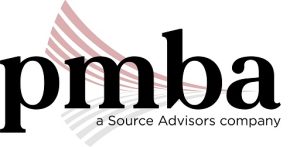What is the R&D Tax Credit
Software companies have traditionally qualified for the R&D Tax Credit against income tax. However, many software companies are not taxable and up until recently could not benefit from this credit. The Protecting Americans from Tax Hikes Act (PATH) Act of 2015 allowed qualified start-up companies (i.e., those with less than $5 million in gross receipts and earning revenue for less than 5 years) to utilize their research and development tax credit (RTC) against their payroll taxes and eligible small businesses (i.e., $50 million or less in gross receipts) to utilize their RTC against their alternative minimum tax (AMT) liability.
Prior to this, small companies or those operating at a loss had to wait until they were taxable before they could begin claiming the credit. Now, by filing a Form 8974 along with their quarterly Form 941, companies can begin claiming the RTC against their payroll taxes in as soon as three months.
The RTC requires a quantitative and qualitative analysis. The qualitative analysis requires meeting a four-part test to qualify for the RTC. The criteria that a business must meet are to be technological in nature, have a process of experimentation involving two or more alternatives to achieve a result and eliminate uncertainty which is intended to develop a new or improved business component to the taxpayer.
This means that the process of experimentation must rely on principles of the physical, biological, computer science or engineering fields. The quantitative analysis consists of eligible costs, including employee wages of those that are supervising, supporting, and conducting Research and Development (R&D) efforts, supply costs that are used and consumed or destroyed in the research and development efforts, as well as any third-party contractors paid on a Form 1099 basis that were involved in the R&D.
Software & the R&D Tax Credit
Software development R&D is unlike the R&D involved with manufacturing tangible products in that the requirements aren’t always as clear. Noting new or changing requirements can have major or minor effects on the design systems and coding efforts. The software industry is uniquely set up to benefit considering it can take years before a platform is commercially available or before a company becomes profitable, and all the while they are investing time and resources into researching and developing hardware and/or software that may involve iterations of source coding, iterations of algorithm development, alpha testing, etc. and were unable to utilize the credit. Designing, coding, testing, new release and version upgrades are all involved in the software development process.
Internal Use Software
Not all software is developed to be commercially sold, leased, licensed, or otherwise marketed to third parties and instead can be developed by the taxpayer primarily for internal use i.e for use in general and administrative functions such as financial management, human resource management, and support services if they support the taxpayers’ trade or business. For Internal Use Software (IUS) to be eligible, it must satisfy the four-part test as well as an additional three-part test. The three parts of the test are:
- “The software is innovative in that the software would result in a reduction in cost or improvement in speed or other measurable improvements, that is substantial and economically significant if the development is or would have been successful;
- Software development involves significant economic risk in that the taxpayer commits substantial resources to the development and there is substantial uncertainty, because of technical risk, that such resources would be recovered within a reasonable period; and
- The software is not commercially available for use by the taxpayer in that the software cannot be purchased, leased, or licensed and used for the intended purpose without modifications that would satisfy the innovation and significant economic risk requirements.”
Dual Function Software
Software that is developed by the taxpayer for both internal and external use is developed primarily for a taxpayer’s internal use unless a subset of elements of dual function software that only enables a taxpayer to interact with third parties or allows third parties to imitate functions.
As the industry develops, artificial intelligence and machine learning technology are expected to play a much larger role. Business models are changing, and SaaS solutions can help a wide variety of industries. Initial releases of applications and developing system software typically entail development uncertainties related to process scheduling and memory management as well as keeping all information safe and secure. Having a process of experimentation to resolve software development uncertainties is very typical of software companies and a major component in qualifying for the RTC.
Please contact us with any questions about the Federal Research and Development Tax Credit Program.
